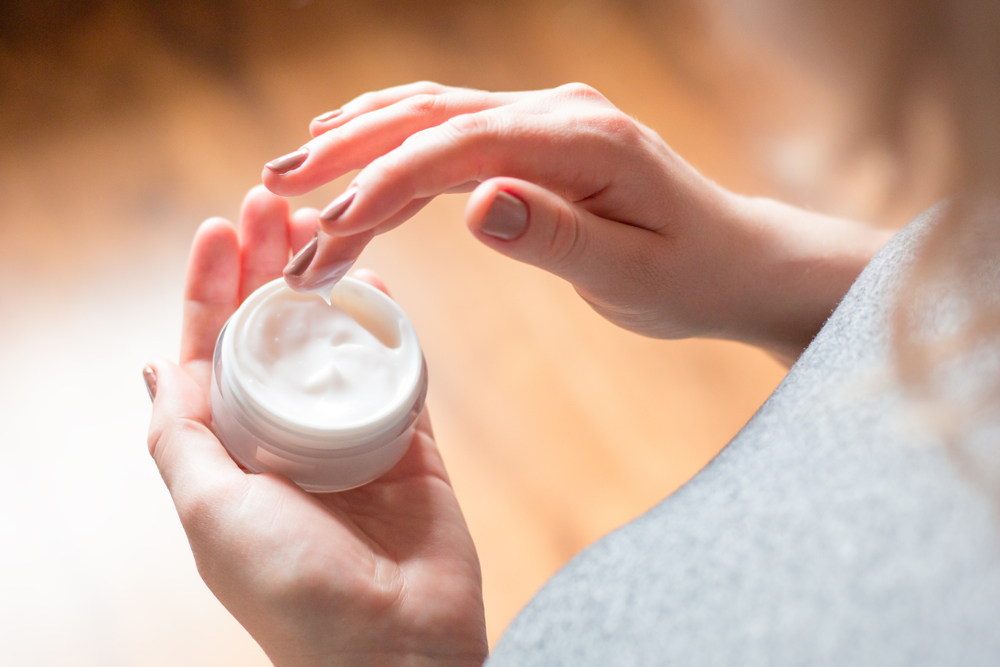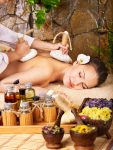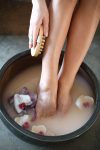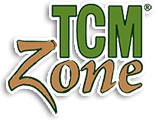The Power of TCM Herbal External Applications: Advanced Techniques and Therapeutic Uses

By Xiyuan “Alex” Qiu, L.Ac.
Traditional Chinese Medicine (TCM) encompasses a rich array of therapeutic modalities, including not only internal herbal remedies and acupuncture but also the application of herbal preparations externally. Advanced acupuncturists and herbalists understand the potent healing potential of TCM herbal external applications, which can offer targeted relief for a wide range of musculoskeletal, dermatological, and internal conditions. In this comprehensive guide, we explore advanced techniques and therapeutic uses of TCM herbal external applications, highlighting the formulation, manufacturing, and clinical applications of ten key remedies.
1. Dit Da Jow (Trauma Liniment)
Formulation: Dit Da Jow is a potent liniment traditionally used to treat traumatic injuries, bruises, and sprains. It typically consists of a blend of alcohol (such as rice wine or vodka) infused with a variety of TCM herbs, including Dang Gui (Chinese Angelica Root), Ru Xiang (Frankincense), Mo Yao (Myrrh), and Bai Zhi (Dahurian Angelica Root).
Manufacturing: To prepare Dit Da Jow, the selected herbs are soaked in alcohol for several weeks to extract their medicinal properties fully. The resulting liniment is then strained and stored in a dark glass bottle for future use.
Clinical Applications: Dit Da Jow is applied topically to areas of pain, swelling, or bruising to promote circulation, reduce inflammation, and alleviate discomfort. It is commonly used by martial artists, athletes, and individuals recovering from injuries.
2. Herbal Soaks for Pain Relief
Formulation: Herbal soaks are preparations made by steeping TCM herbs in hot water and then immersing affected body parts in the resulting herbal infusion. Common herbs used in herbal soaks include Dang Gui (Chinese Angelica Root), Chuan Xiong (Szechuan Lovage Rhizome), and Du Zhong (Eucommia Bark).
Manufacturing: To prepare a herbal soak, the selected herbs are boiled in water for approximately 30 minutes to extract their medicinal properties fully. The herbal infusion is then strained and poured into a basin or tub, where the affected body part can be soaked for 15-30 minutes.
Clinical Applications: Herbal soaks are beneficial for relieving pain, stiffness, and inflammation associated with musculoskeletal conditions such as arthritis, tendonitis, and muscle strains. They promote relaxation, improve circulation, and facilitate the absorption of herbal compounds through the skin.
3. Gao Yao (Herbal Plasters)
Formulation: Gao Yao, or herbal plasters, are external applications made by grinding TCM herbs into a fine powder and mixing them with a sticky substance such as honey or sesame oil to form a paste. Common herbs used in Gao Yao formulations include Huang Qin (Scutellaria Root), Bai Zhi (Dahurian Angelica Root), and Fang Feng (Siler).
Manufacturing: To prepare Gao Yao, the selected herbs are powdered using a mortar and pestle or electric grinder. The powdered herbs are then mixed with honey or sesame oil to form a thick paste, which is applied directly to the affected area and covered with a bandage or cloth.
Clinical Applications: Gao Yao plasters are used to treat a variety of conditions, including acute injuries, chronic pain, and dermatological disorders. They provide localized heat, stimulate circulation, and deliver therapeutic compounds directly to the affected tissues.
4. Herbal Compresses for Wound Healing

Manufacturing: To prepare a herbal compress, the selected herbs are boiled in water to create a concentrated decoction. The decoction is then poured over a clean cloth or bandage, which is wrung out and applied to the affected area while still warm.
Clinical Applications: Herbal compresses are beneficial for promoting wound healing, reducing inflammation, and preventing infection. They can be used to treat cuts, abrasions, burns, and other skin injuries, providing both antimicrobial and anti-inflammatory effects.
5. Moxibustion for Pain Management
Formulation: Moxibustion is a TCM technique that involves burning the dried herb Artemisia vulgaris (mugwort) near acupuncture points or affected areas of the body to promote healing and alleviate pain. Moxa sticks or cones are commonly used for this purpose.
Manufacturing: Moxa sticks are made by grinding dried mugwort leaves into a fine powder and then compressing the powder into cylindrical sticks or cones. The sticks are then ignited and held near the skin to produce heat and stimulate acupuncture points.
Clinical Applications: Moxibustion is effective for treating a wide range of pain conditions, including arthritis, muscle tension, and menstrual cramps. It promotes circulation, relieves muscle tension, and enhances the flow of qi and blood in the body.
6. Herbal Steam Baths for Respiratory Health
Formulation: Herbal steam baths involve inhaling steam infused with the vapors of TCM herbs to alleviate respiratory symptoms, such as congestion, coughing, and sinusitis. Common herbs used in herbal steam baths include Ma Huang (Ephedra), Bai Zhi (Dahurian Angelica Root), and Bo He (Mint).
Manufacturing: To prepare a herbal steam bath, the selected herbs are boiled in water to create a concentrated decoction. The decoction is then poured into a basin or pot, and the patient inhales the steam for 10-15 minutes while covering their head with a towel to trap the vapors.
Clinical Applications: Herbal steam baths are beneficial for treating respiratory conditions such as colds, flu, bronchitis, and allergies. They help to open the airways, thin mucus, and soothe inflammation in the respiratory tract.
7. Herbal Foot Soaks for Detoxification

Manufacturing: To prepare a herbal foot soak, the selected herbs are boiled in water to create a concentrated decoction. The decoction is then poured into a basin or tub, and the patient immerses their feet in the herbal infusion for 20-30 minutes.
Clinical Applications: Herbal foot soaks are beneficial for promoting circulation, reducing inflammation, and enhancing detoxification. They can help to relieve foot pain, swelling, and fatigue, as well as improve overall energy levels and vitality.
8. Herbal Eye Washes for Ocular Health
Formulation: Herbal eye washes involve rinsing the eyes with a diluted solution of TCM herbs to soothe irritation, reduce inflammation, and promote eye health. Common herbs used in herbal eye washes include Ju Hua (Chrysanthemum Flower), Bo He (Mint), and Bai Ji (Bletilla Rhizome).
Manufacturing: To prepare a herbal eye wash, the selected herbs are steeped in hot water to create a concentrated infusion. The infusion is then cooled to room temperature and strained to remove any solid particles before being used to rinse the eyes.
Clinical Applications: Herbal eye washes are beneficial for relieving symptoms of eye strain, dryness, redness, and allergic reactions. They can also help to prevent and treat minor eye infections, such as conjunctivitis and styes, by promoting healing and reducing inflammation.
9. Herbal Mouthwashes for Oral Health
Formulation: Herbal mouthwashes involve rinsing the mouth with a diluted solution of TCM herbs to promote oral hygiene, freshen breath, and alleviate oral discomfort. Common herbs used in herbal mouthwashes include Huang Lian (Coptis Rhizome), Jin Yin Hua (Honeysuckle Flower), and Ku Shen (Sophora Root).
Manufacturing: To prepare a herbal mouthwash, the selected herbs are boiled in water to create a concentrated decoction. The decoction is then cooled to room temperature and strained to remove any solid particles before being used to rinse the mouth.
Clinical Applications: Herbal mouthwashes are beneficial for preventing and treating oral conditions such as gum disease, tooth decay, and mouth sores. They have antimicrobial, anti-inflammatory, and astringent properties that help to maintain oral health and promote healing.
10. Herbal Hair Rinses for Scalp Health
Formulation: Herbal hair rinses involve applying a decoction of TCM herbs to the scalp to nourish the hair follicles, promote hair growth, and improve scalp health. Common herbs used in herbal hair rinses include He Shou Wu (Fo-Ti Root), Bai Shao (White Peony Root), and Wu Jia Pi (Acanthopanax Bark).
Manufacturing: To prepare a herbal hair rinse, the selected herbs are boiled in water to create a concentrated decoction. The decoction is then cooled to room temperature and strained to remove any solid particles before being applied to the scalp.
Clinical Applications: Herbal hair rinses are beneficial for treating common scalp conditions such as dandruff, itchiness, and hair loss. They help to balance the scalp’s pH, improve circulation, and nourish the hair follicles, resulting in healthier, stronger, and more vibrant hair.
Conclusion: Harnessing the Healing Power of TCM Herbal External Applications
In conclusion, TCM herbal external applications offer a diverse and effective approach to promoting health and well-being. Advanced acupuncturists and herbalists can harness the therapeutic potential of these remedies to address a wide range of conditions, from musculoskeletal injuries and dermatological disorders to respiratory ailments and oral health issues. By understanding the principles of formulation, manufacturing, and clinical application, practitioners can deliver targeted and personalized care that supports the body’s natural healing processes and enhances overall vitality.
References:
– Bensky, D., & Barolet, R. (1990). Chinese Herbal Medicine: Formulas & Strategies. Eastland Press.
– Chen, J. K., & Chen, T. T. (2004). Chinese Medical Herbology and Pharmacology. Art of Medicine Press.
– Maciocia, G. (2005). The Practice of Chinese Medicine: The Treatment of Diseases with Acupuncture and Chinese Herbs. Churchill Livingstone.
– Ross, J., & Wilson, D. (2007). Chinese Medicine in Cancer Care: Herbs, Acupuncture, and Traditional Chinese Medicine in Cancer Care. Thieme.

